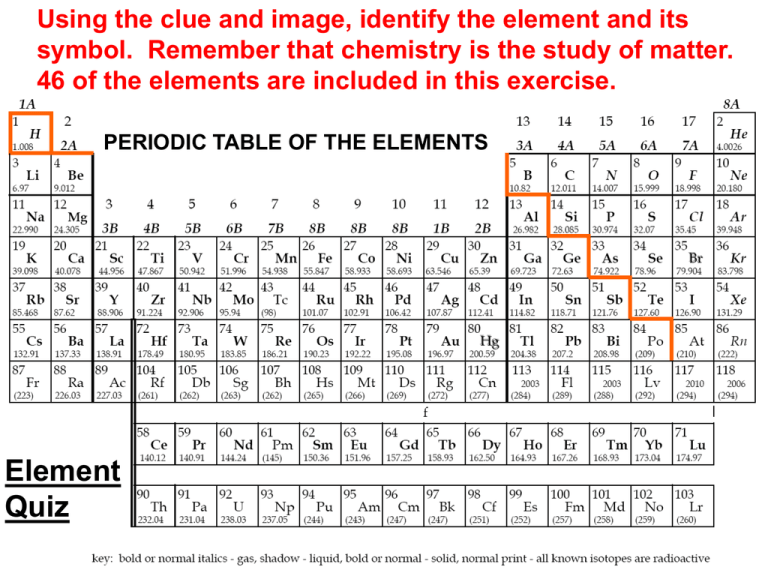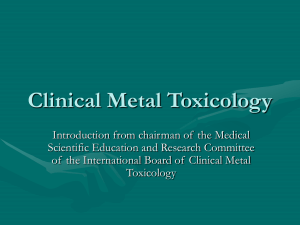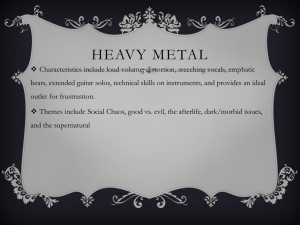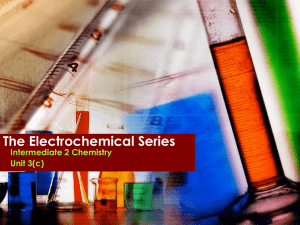This alkaline earth metal is used in fireworks and flash
advertisement

Using the clue and image, identify the element and its symbol. Remember that chemistry is the study of matter. 46 of the elements are included in this exercise. PERIODIC TABLE OF THE ELEMENTS Element Quiz The lowest density gas. By far the Hydrogen most common element in the sun and universe. An inert gas used in balloons (also what a doctor tries to do to patients). Helium Compounds of this light member of the alkali metals are used to treat some types of mental disorders. Lithium Compounds of this first member of the alkaline earth metals are extremely toxic. Beryllium Compounds of this group 3A (or 13) element are important in cleaners (also what one termite might say to another). Boron Organic chemistry is the chemistry of compounds of this element. It occurs as diamond and graphite. Carbon Non-metal which is 78% of air (also what one trogen says to another on the way to bed). Nitrogen In liquid state This non-metal necessary for animal life is the second most abundant element in the atmosphere (21%) and the most abundant in the earth's crust. Oxygen Liquid form paramagnetism Compounds of this gaseous halogen are used as additives in toothpastes and in some water supplies. Fluorine Inert gas used in colored display lights. Neon Alkali metal whose ion is blamed for high blood pressure. Reacts violently with water. Sodium + water This alkaline earth metal is used in fireworks and flash bulbs and is present in chlorophyll. Magnesium This low density metal is used extensively in foil, kitchen utensils and wiring. Aluminum The second most abundant element in the earth's crust is used in semiconductors (also a joker in jail). Silicon This non-metal is part of the DNA polymer chain and is used in matches. Phosphorus Allotropes of this element This nonmetal is used in the vulcanization of natural rubber and as a fungicide. Sulfur This gaseous halogen is used in bleach, pools and for water purification. Chlorine This inert gas is the third most abundant gas in the atmosphere. abcdefghijklmnopqstuvwxyz The r is missing or gone. Argon Discharge tube Compounds of this alkali metal are sometimes used by people on low sodium diets. Reacts violently (see below )with water. Potassium + water Compounds of this alkaline earth metal make up limestone, chalk, teeth and bones. Calcium This transition metal is as strong as steel, 45% less dense and maintains properties with temperature changes and although in abundance on earth, is expensive to refine. Titanium This transition metal is used as a coating on water taps and bumpers because of its luster but many of its compounds are carcinogenic. Chromium This transition metal is used in many important alloys including steel. Manganese This transition metal is the main element in steel (also a really pressing thing). Iron This is the transition metal present in Vitamin B12 (also what happens to men as they grow old). Cobalt Transition metal whose ion has a green color. Also $0.05. Nickel This transition metal is used for electrical wiring. Copper Transition metal used in many alloys such as brass and to galvanize steel (also where you pour stale milk). Zinc A metalloid used extensively in semiconductor materials. Its name sounds a little like a flower. Germanium This toxic member of the nitrogen family is used in the manufacture of pesticides. Arsenic This halogen is the only liquid non-metal. Bromine This is the lightest element that does not have any stable isotopes. One of its isotopes is used extensively for medical diagnoses. Technetium This brilliant white metal is an excellent electrical conductor and used in jewelry and tooth fillings. Silver This member of the carbon family has predominantly metallic properties and is used to coat steel in cans for preserving food. Tin This toxic solid halogen is used as an antiseptic. Iodine subliming A heavy alkaline earth element. Despite the toxicity of its salts, one of the salts (sulfate) is used in the "milk shakes" taken by a patient for a gastrointestinal series of X-rays (also what happens to patients when the doctor fails). Barium This rare earth element is used to make the strongest permanent magnets. Neodymium This transition metal is used for incandescent light bulb filaments. Tungsten This silvery white, fairly inert, rare transition metal is used in jewelry and for electrical contacts (also what you might like to do to a big meanie). Platinum This transition metal has often been used as the base for monetary systems and is used in jewelry. Gold The only liquid metal. Used for thermostats and to make amalgams for items such as tooth fillings (also a Greek streeker who wore shoes with wings). Unfortunately very toxic. Mercury This metal is used in the manufacture of storage batteries and X-ray shields. Lead The heaviest nonradioactive element. Bismuth This alkaline earth metal is radioactive and has been used on watch and clock hands (also what police do to wild parties). Radium This radioactive element is used in nuclear reactors and weapons but the most abundant isotope (99.3%) does not undergo fission. Uranium This transuranium element although detected recently on earth must be synthesized from U-238. It is used in nuclear weapons and reactors and is extremely toxic. Plutonium https://uwaterloo.ca/chem13news/periodic-table-project/mobile-apps-0 CHEMISTRY MATTERS! While this quiz is over, it is hoped that you will try to learn more about the elements and the periodic table. Although some students perceive that the main goal of testing is for grading, the primary goal of testing is actually to provide a learning experience. Hopefully, you have learned from this experience. Remember that chemistry is everything that matters (including love)!







